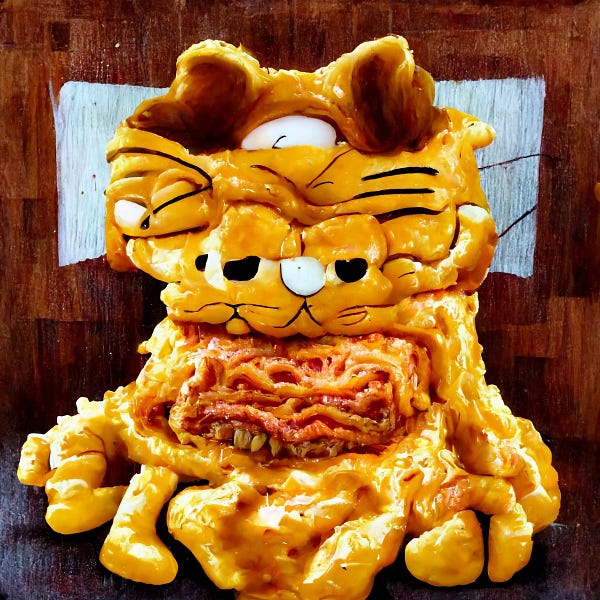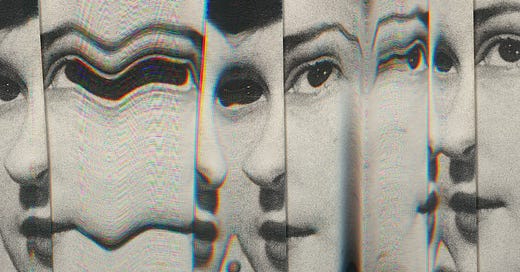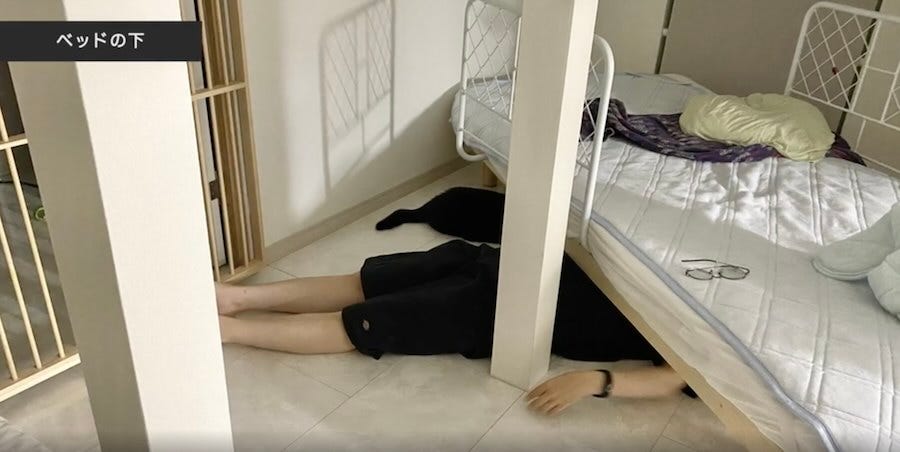GOOD INTERNET ELSEWHERE // Twitter (Newsletter) / Twitter (Links) / Facebook (Newsletter) / Facebook (Links) / Instagram (Pics and Memes) / Reddit (Links) / Telegram (Links)
SUPPORT // Substack / Patreon / Steady / Ko-Fi / Paypal / Spreadshirt
Musicvideos have their own Newsletter now: GOOD MUSIC. All killers and absolutely zero fillers. The latest issues featuring Cannibale, Leon Bridges, Bonnie “Prince” Billy, The Snuts, Spirit of the Beehive, Health, Jack White, DFA1979 and many more. You can also find all the tracks from all Musicvideos in a Spotify-Playlist.
Meme-Tiks are real
Vor ein paar Monaten schrieb ich auf dem Experten-Portal Piqd einen kleinen Artikel über Tourette-artige Symptome, die sich memetisch über emotionale Ansteckung auf Video-Plattformen verbreiten, die wahrscheinlich erste über das Internet übertragene Krankheit, eine neue Form sogenannter Mass Psychogenic Illness (früher: Massenhysterie). Viele Tech-Kommentatoren konnten das nicht glauben und belächelten die Nachricht, während die Meldungen auf zwei Papers beruhten, die das Phänomen unabhängig voneinander untersuchten. Helen Lewis hat nun im Atlantic einen langen Text über die erste memetische Krankheit, Tourette-Influencer auf Youtube und ihre “Twitching Generation” mit einigen sehr faszinierenden Details.
Tammy Hedderly, a neurologist at the Evelina London Children’s Hospital, sometimes calls her new-style tic patients “Evies.” These girls “present thumping their chest, shouting beans, and falling to their knees,” she told the virtual conference. The nickname comes from a 21-year-old British influencer named Evie Meg Field, also known as @thistrippyhippie, who has 14.2 million followers on TikTok and nearly 800,000 on Instagram. Field has published a book called My Nonidentical Twin: What I’d Like You to Know About Living With Tourette’s.
Field’s signature tic—saying beans—is what alerted the British researcher Tara Murphy that the Tourette’s patient she saw on remote St. Helena must have been influenced by the internet. At the October conference, Murphy described how “LM,” a 16-year-old born and raised on the island, had tics from an early age but suddenly developed much more florid symptoms in early 2021: clicking, whistling, and saying beans. In other words, LM was an “Evie.”
Field herself has acknowledged her strange power. On September 25, she posted a video of herself looking sheepish with the caption: “me watching 95% of ppl with tics/tourette’s say the ‘beans’ tic knowing i’m the original source.” (…)
Categorizing the new tic-disorder outbreak as a mass psychogenic illness would explain many of its notable features, such as the age and gender profile of patients. Bartholomew says that out of the 3,500 likely cases of MPIs that he has identified through history, “I would say 98 percent of them are majority female.” (Two possible exceptions are Gulf War and Havana syndromes.)
Are girls simply more prone to such illnesses? Early research does suggest that they are more affected by social-media pressures, after all. Or are doctors and authorities more ready to describe women’s symptoms as the modern version of hysteria? What is clear, though, is that something new is happening in the history of mass psychogenic illnesses. Previously, an outbreak was limited to one village, one classroom, one nunnery. “It has always been said that it’s spread by sight and sound; in the past, that’s been a limiting factor,” Bartholomew told me. But now we are a global village, and if tics can instead be spread through screens, then that tells us something about how strongly teenagers feel about the people they interact with online.
Hier mein Artikel aus dem vergangenen Oktober über das Phänomen:
Meme-Tiks: Social Media-induzierte Tourette-Symptome
Der Begriff "Massenhysterie" beschreibt die sozial ansteckende Erkrankung einer großen Gruppe von Menschen, deren Symptome die durch Imitation und Verhaltenssynchronisation übertragen werden und für die es meistens keine körperliche Grundlage gibt. So hatte etwa in einem berühmten Fall eine Folge der Zeichentrickserie in den 90er Jahren bei 12.000 japanischen Kindern die sogenannten "Pokémon Seizures" ausgelöst, für die nur bei einem Bruchteil der gemeldeten Anfälle tatsächliche neurologische Grundlagen diagnostiziert wurden.
Anfälle von Massenhysterie sind keineswegs ein Phänomen der Moderne oder der Massenmedien und sie sind bis ins Mittelalter dokumentiert. Die ersten bekannten Fälle sind sogenannte "Dancing Manias", während derer hunderte und tausende Leute über einen Zeitraum von Wochen und Monaten fortwährend "tanzten", begleitet von Lachanfällen und obszönen Gesten. Forscher vermuten, dass die Sage des Rattenfängers von Hameln auf einer "Dancing Mania" beruht.
Ärzte berichten nun vom Ausbruch einer sozial ansteckenden Verhaltensstörung bei einer global verteilten Gruppe von Kids, in der Teenager nach dem Anschauen von TikTok- und Youtube-Videos innerhalb weniger Tage Tourette-artige Symptome entwickelten, für die es keine körperlichen Grundlagen gibt. Die Ärzte schlagen für dieses neuen Phänomen den Term "Mass Social Media-Induced Illness" vor.
Diese neuesten Fälle einer "Massenhysterie" wurden in gleich zwei Studien dokumentiert. Laut einem Paper der International Parkinson and Movement Disorder Society stieg seit Beginn der Corona-Pandemie "rapid onset functional" Tik-artiges Verhalten vor allem unter weiblichen Teenagern stark an. Alle der untersuchten Teenager hatten Tourette-Videos auf Tik Tok konsumiert. Hier ein Artikel im i-D Magazin.
In Deutschland berichtet Neurologin und Psychiaterin Kirsten Müller-Vahl von einem Anstieg der Tourette-Patienten nach dem Launch des YT-Channels "Gewitter im Kopf", hier ein Artikel auf Wired.com.
Die Patienten weisen die gleichen Ticks und Verhaltensweisen auf, wie der Influencer auf Youtube, die Symptome verschwinden in manchen Fällen durch eine negative Diagnose innerhalb weniger Stunden. In anderen Fällen ist eine langwierige Therapie nötig.
Aus dem Paper:
While our patients did not have direct personal contact neither to Jan Zimmermann, nor among each other, they got into indirect contact to Jan Zimmermann in the form of strong identification. Patients reported admiring Jan Zimmermann for his open approach to the supposed “Tourette syndrome” and for being successful despite his condition, which causes strong emotions and hence further triggers contagion.
Thus, current outbreak of “Tourettelike” symptoms can be regarded as a new variant of MSI, where social media serve as an “extension of our eyes and ears” and replace the necessity of being in direct visual or verbal contact with others for spread.
Es handelt sich laut den Ärzten um die erste sozial ansteckende Massenerkrankung durch Soziale Medien. What a time to be alive.
You gotta love those russian spacesuits! (Yes, I ignore the Bauman University context.) And ukrainian soldiers playing Don’t worry be happy in front of an opera in Odessa may be one of the weirder moments in a war full of weird moments.
Because I am methusalem years old, i very well remember sucking music from the internets through a software called Limewire. It’s back and i’m sad to inform you, that it’s a NFT-marketplace now. Blerch.
I propose a sub-Internet Rule 34.1 for this: "If it's dumb enough, NFTs exist."
So how’s that tech revolution going? Glad you’re asking. It’s going “Linking Park mints Song as NFTs while designey plastic figures puke rainbow colored vomit as if its 2008” and “This is changing the future. This is FLUF House. This is the Hume Collective, so remember why you are here. Remember the power that you have. The power of this community, and when it gets hard, remember you are not alone.” This is not 2008, this is 1998 and it’s the lamest cult.
However, there are no significant downsides to sleeping like a cat.
Cats will sleep in a variety of different locations, each likely the combination of factors such as mood, warmth, light and coziness. If humans were to imitate these patterns, what effect would that have on their quality of sleep? Researcher Yuri Nakahashi attempted to measure and quantify the physical and mental effects this would have on humans by monitoring her 5 cats and allowing each to choose her location of slumber.
Once the cat had appeared to curl up for evening, Nakahashi would lay down a sleeping bag in the same spot, a determination that sometimes resulted in sleeping under a bed or along the stairs. The experiment was conducted for 24 consecutive nights.
“The Seshoseki (殺生石) killing stone, said to have sealed the spirit of a vengeful fox demon over 1000 years ago, split in half recently.” I know exactly why this spirit of a vengeful fox escaped his prison of a thousand years and i know exactly who it will haunt. I times like these you really don’t want to unleash the sleeping demon foxes upon this world.
“The most boring person in the world has been discovered by University of Essex research — and it is [me and you] a religious data entry worker, who likes watching TV, and lives in a town. The peer-reviewed study into the science of boredom has uncovered the jobs, characteristics, and hobbies that are considered a stereotypical snooze. After examining more than 500 people across five experiments researchers found the blandest jobs are seen as data analysis, accounting, cleaning and banking. The paper—published in the Personality and Social Psychology Bulletin—also discovered that religion, watching TV, bird watching, and smoking were amongst the dullest hobbies. Boring people were also perceived to shun large settlements to live in small cities and towns”.
This is me. I’m goblin and goblin mode is life itself!
At some point in the stretch of days between the start of the pandemic’s third year and the feared launch of world war three, a new phrase entered the zeitgeist, a mysterious harbinger of an age to come: people were going “goblin mode”.
The term embraces the comforts of depravity: spending the day in bed watching 90 Day Fiancé on mute while scrolling endlessly through social media, pouring the end of a bag of chips in your mouth; downing Eggo toaster oven waffles with hot sauce over the sink because you can’t be bothered to put them on a plate. Leaving the house in your pajamas and socks only to get a single Diet Coke from the bodega.
Inherent to the phrase is the idea that it can be switched on and off, said Dave McNamee, a self-described “real-life goblin” whose tweet about goblin mode recently went viral. Goblin mode is not a permanent identity, he said, but a frame of mind.
“Goblin mode is like when you wake up at 2am and shuffle into the kitchen wearing nothing but a long T-shirt to make a weird snack, like melted cheese on saltines,” he said. “It’s about a complete lack of aesthetic. Because why would a goblin care what they look like? Why would a goblin care about presentation?” (...)
“Goblin mode is kind of the opposite of trying to better yourself,” says Juniper, who declined to share her last name. “I think that’s the kind of energy that we’re giving going into 2022 – everyone’s just kind of wild and insane right now.”
On TikTok, #GoblinMode is affixed to videos of everything from “smoking weed alone and getting scared”, to “not taking your meds”, and “hoarding weird shit just in case you run out”.
Also Goblin:







